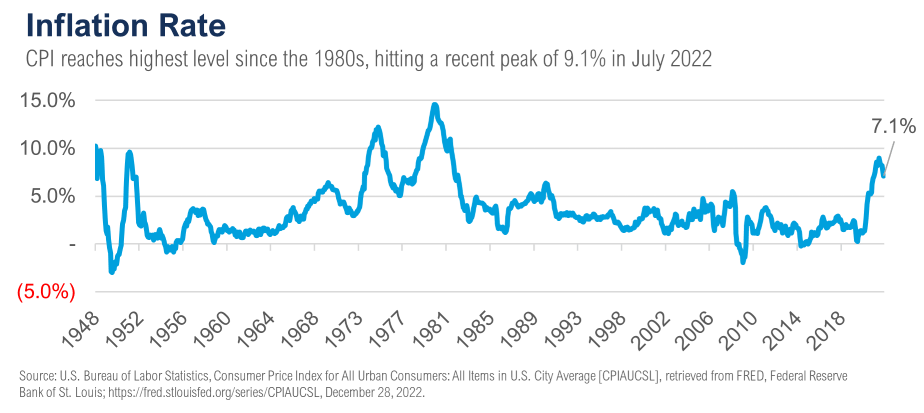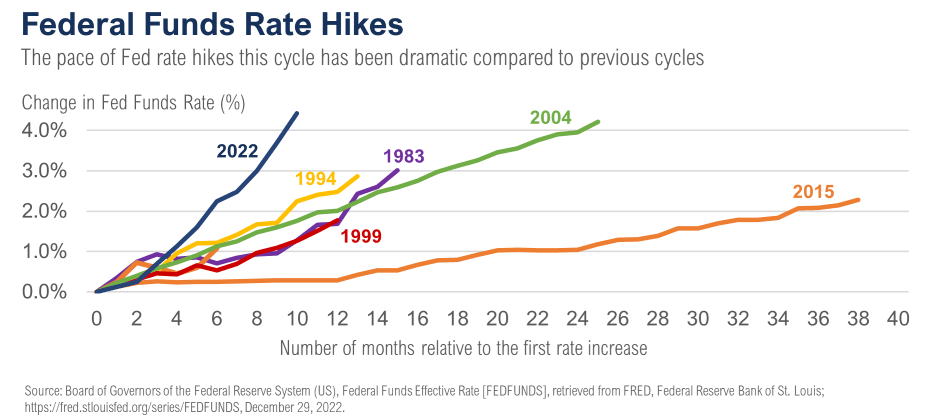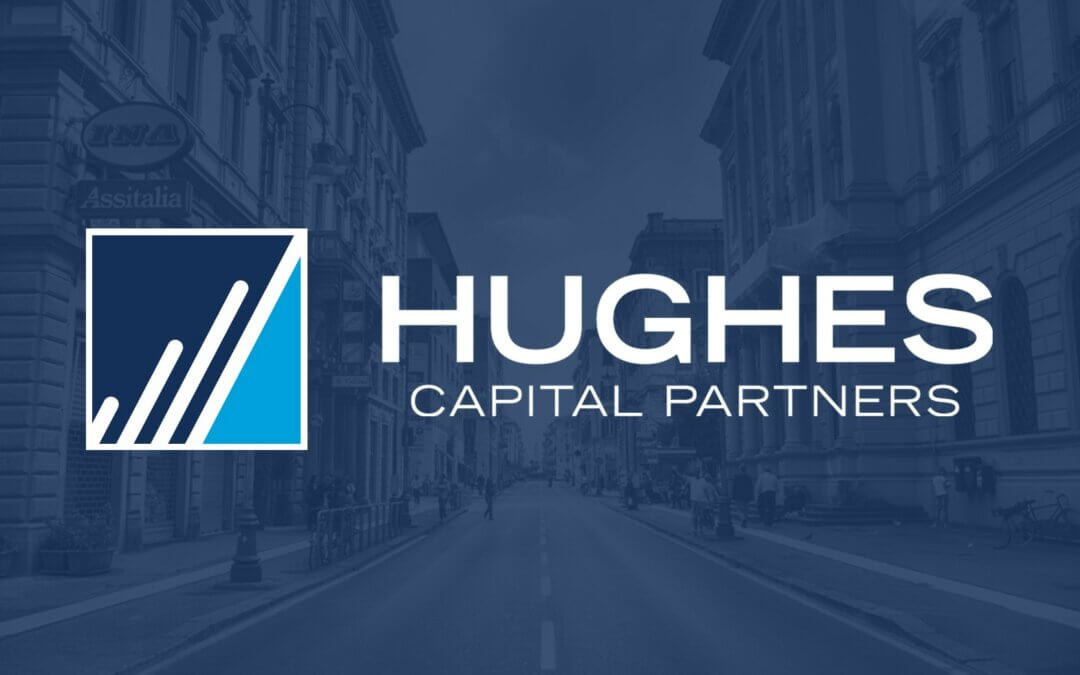Insights
Insights
Considerations for Real Estate Investment in an Inflationary Environment
January 3, 2023

Inflation reaches its highest level since the 1980s
Inflation soared in 2022 as the global economy experienced a number of unforeseen shocks. The impact of government stimulus, low interest rates, disruption within the global supply chain, and an ongoing war in Ukraine have resulted in prices for goods and services hitting record highs. The U.S. Bureau of Labor Statistics reported that its consumer price index (CPI-U) climbed 7.1% in November from a year ago, down from a peak of 9.1% in July — the highest reading since the early 1980s, and well above the long-term inflation target of 2.0%.

The Federal Reserve’s initial assessment of “transitory” supply and demand imbalances has proven to be incorrect as inflation has been more persistent than anticipated. The Federal Reserve must act quickly to rein in an overheated economy. Allowing inflation to become entrenched, or “sticky”, can lead to a wage-price spiral where higher prices motivate workers to demand wage increases which, in turn, pushes goods and services prices even higher. Despite the motivation to act swiftly, the Fed has limited options and must weigh restrictive policies that weaken demand and slow inflation against the possibility of an overcorrection that would drive the economy into recession.
In March, the Federal Reserve began implementing tighter monetary policy by increasing the target federal funds rate and began quantitative tightening (QT) by unwinding the Fed’s balance sheet. As of December, the benchmark Federal Funds Rate range has been increased seven times, from pre-pandemic lows of 0.0% to 4.25%-4.50%. The market continues to brace for additional increases as we enter the new year, steepening what is already the fastest rate-hike cycle of the past four decades.

Valuation multiples have lagged the soaring cost of capital, constraining investment yields and directly impacting available cash flow. Higher rates and uncertainty about the path forward have led to significant volatility within the market and created a growing sense of unease amongst the investor community. Real estate has traditionally played the role of an inflationary hedge, but the rising tide environment seems to have ended. The emerging disparate performance between “winners” and “losers” highlights the importance of identifying key considerations for real estate investment in an inflationary environment.
Trends shaping today’s real estate sector
After learning hard lessons during the Great Financial Crisis, the market has not seen nearly the same level of leverage in this cycle. Tighter underwriting standards and lower levels of debt have greatly reduced the risk to the overall system. The sector’s moderate leverage means that sufficient cash flow is still available to offset the recent increases in interest payments, creating far less distress than the GFC. Pockets of distress may occur for over-leveraged and undercapitalized investments as rates stay elevated and demand softens during a recession; however, it remains to be seen whether these pockets evolve into distress at a systemic level.
Despite the challenges facing investors in the capital markets, resilient operating fundamentals continue to be a positive signal for the sector. We’ve seen less overbuilding, especially within the residential asset class as many areas remain undersupplied – particularly within the workforce and attainable housing spaces. Demographic growth has outpaced the delivery of new supply, and recent forecasts suggest an additional 3.7 million rental units are needed to accommodate demand through 2035. With growing demand and insufficient new supply in the pipeline, we feel encouraged by the sector’s underlying fundamentals and that means stronger rents and stronger occupancies.
Positioning within an inflationary environment
In an environment like this, we want to own hard assets with short-duration leases that have strong fundamentals and pricing power within their respective market. Shorter duration leases and pricing power allow investors to benefit from the markets’ inflationary price increases to offset growing operating costs and valuation shifts. The higher cost of debt directly impacts valuation multiples, applying strong downward pressure. A proper hedge will have sufficient cash flow growth to offset these changes partially or in full.
Imagine a single-tenant retail or office opportunity. These look more akin to long-duration bonds rather than inflationary hedges. The value of these assets is often derived from long leases that may offer limited, or fixed, opportunities for revenue growth, despite the environment around them getting more and more expensive. A step further, consider potential vacancies and re-tenanting risks associated with a recessionary economy and lagging demand for new business expansion. These are assets that are unlikely to perform well during a period of outsized inflation.
While interest rates and inflation remain high, assets with the greatest opportunity to grow cash flow will likely fare much better. Investors should focus on cash-flowing assets in supply-constrained markets with strong fundamentals such as population growth, employment growth, wage growth, and infrastructure investment.
Related Insights

Signal Intelligence: Navigating Private Real Estate by Leveraging the Public Markets
The public markets frequently offer valuable insights to private market investors, serving as a crucial predictor of what lies ahead.

Statement regarding unaffiliated Hughes Private Capital, a Nevada-based firm
(DALLAS – July 3, 2023) Reno-based Hughes Private Capital, Inc. is not affiliated with Hughes Capital Partners, LLC (“HCP”) or any HCP investments.

AI Everything: The Rise of Artificial Intelligence in Commercial Real Estate
In the midst of groundbreaking advancements in technology, we discuss impacts and applications of AI within commercial real estate.
Start the Conversation
Committed to delivering institutional-caliber investment opportunities, strategy, and execution.
